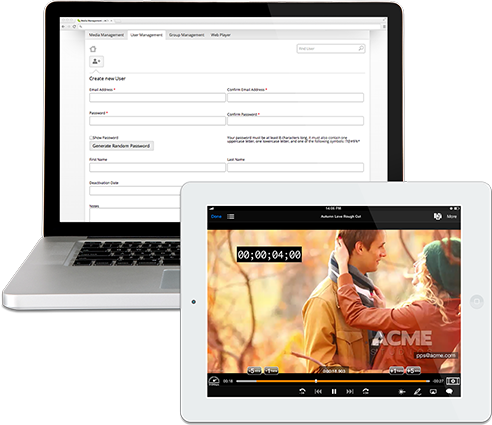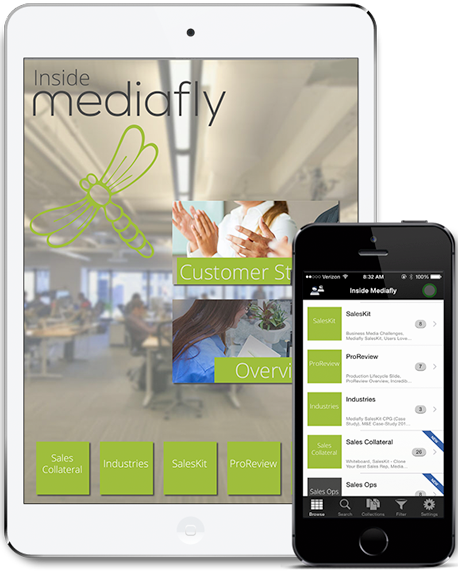Mediafly has often been branded as a “mobility” company. We, too, often use that term to describe ourselves. However, the more I think about it, the more I realize that mobility is not really the revolution that sparked our success and the innovation we have brought to industry-leading companies. It was actually…the finger!
And no, I’m not referring to the middle finger.
Apple has been credited with sparking the mobile revolution, particularly within the enterprise. The main characteristics of which are the universally defined as portability and connectivity. Yet, before Apple released the iPad, there were plenty of equally portable devices out there. I rocked a Treo 700w for some time. And years before that, I had a small touch-screen Toshiba. So, the iPad didn’t really invent mobility to the extent that it refers to portability.
Another aspect of mobility is connectivity to the internet. Apple did a great job of enabling their devices with 3G, 4G, and WiFi connectivity. They did this in a way that had not been done before. It was this connectivity that laid the groundwork for the true revolution and the new characteristics of mobility: engagement and ease.
When our ancestors were swinging from trees in the jungle, it was the opposable thumb that enabled the evolution of society. Our ancestors started interacting with the world in a way that was impossible before the modern thumb. Apple similarly evolved and re-defined the way we previously interacted with software by focusing on an interface, operating system, and development kit for third parties developers—all of which were touch-centric.
While this may seem obvious, it was not the case before. Blackberry used external keypads and physical buttons to enable user interaction, and Palm and Microsoft relied heavily on the stylus. Apple changed that by having us use our finger.
And like a kid making a finger painting, it was natural and intuitive. We didn’t need training. Apple’s user-friendly interfaces were simple. With only so much room to fit touch-friendly buttons, Apple eliminated complex navigation schemes and right-click capabilities. Everything in the interface had to be directly accessible and big enough for a fat finger to click on.
To put it bluntly, Apple essentially gave the finger to the way we had interacted with software for decades. The revolution that followed is nothing short of incredible!
Software developers began creating software—from games to enterprise apps—that were easier to use and more intuitive. Accordingly, kids and grandparents alike came to expect—or rather demand—that software was easy and user-friendly. Apple even simplified the cumbersome name, “applications”, referring to them as “apps”.
Like a citizens’ uprising casting out the dictatorial monarchy, consumers began revolting against apps that did not meet this new, user-friendly standard. Enterprise software is now being forced to evolve quickly or risk becoming irrelevant. Gone are the days where a business can mandate the use of convoluted and utilitarian software applications.
So now, 5 years later, when I sit in rooms with the leadership teams of Fortune 500 companies and talk with them about their desire to become mobile, I realize that they don’t mean “portable” or “connected” (although being portable and connected are certainly valuable). What they really mean is that they want to be innovative. They want to evolve the way their employees, partners, and customers interact with their information on any device.
Here are two cases where companies thought they wanted mobility (and so did I). They built their mobility solutions with Mediafly and have been very successful. However, now I realize that they really came to us for a solution that provided innovation and effectiveness—not mobility.
TV & Movie Production: Screening Production Content on a Mobile Device
 Some of the largest and most technically advanced studios still rely on physical media. They still ship DVDs around to review dailies, rough cuts, and pilots. Our customers knew there was a better, safer way. By using Mediafly ProReview, studio executives, production staff, actors, directors, and partners view (or screen) these videos right from any device (tablet, laptop, and beyond). Interestingly, about
Some of the largest and most technically advanced studios still rely on physical media. They still ship DVDs around to review dailies, rough cuts, and pilots. Our customers knew there was a better, safer way. By using Mediafly ProReview, studio executives, production staff, actors, directors, and partners view (or screen) these videos right from any device (tablet, laptop, and beyond). Interestingly, about
Interestingly, about 50% still use their desktops to screen videos. They love the experience just as much as screening from a mobile device because ProReview has the same type of interface that you would expect on an iPad. In other words, it’s touch-friendly and user-friendly—devoid of countless menus and confusing options.
 Enterprise Sales Presentations
Enterprise Sales Presentations
When SAP’s cloud business, Ariba, wanted to help the thousands of global SAP sales reps engage with customers around Ariba’s solutions, they came to Mediafly for a solution. As a global software company with virtually limitless resources at their disposal, they didn’t just need an “app”. They knew Ariba had an innovative story to tell. They knew that it could only be delivered in a way that was intuitive and engaging. They needed a user experience optimized and designed for this canvas of interaction.
Since engaging with Mediafly, their results have been transformative, according to their CMO SAP Cloud, Tim Minihan;
“The new SalesKit is a model for sales enablement and effectiveness. This solution made our sales team more effective and our story more compelling and tailored to each unique customer need.”
These recent insights have got me thinking. After years of selling “mobile” solutions, I am seriously contemplating referring to “mobile” as simply a capability, just like security and extensibility. One challenge I see in the marketplace is that solution providers are focused only on mobility and not innovation. Their customers expect the mobilization of their content to improve their market share and sales. However, in the end, it doesn’t work this way.
Companies often come to Mediafly after they have tried and failed at rolling out a mobility solution or strategy. They discover that they need more and after coming to us, they are wildly successful. So why are they successful with Mediafly?
The answer is simple. These companies want to evolve from swinging in the trees to a more enlightened and evolved state of doing business. To do that, they need a solution for innovating and elevating interactions with their information. They need to evolve beyond “mobile”.
How has your organization evolved from focusing on just “mobile” to focusing more on innovation?
Carson Conant is the CEO and Founder of Mediafly, Inc. Inspired by the efficiencies created by leading Software as a Services companies, Carson led Mediafly to pioneer the mobile generation’s version of SaaS solutions: Mobile Apps as a Service (MAaaS), which is now embraced by some of the world’s most respected companies. When Carson is not traveling to be with customers, prospects, sales teams, and shareholders, he lives in Chicago with his beautiful wife and two rambunctious children.




Comments are closed.